#while kiryu. is like an addict but for Violence
Text
yakuza 5 kiryu is the gayest iteration of kiryu. also by far the angriest. this makes yakuza 5 kiryu extremely enjoyable
#man’s just straight up not having a good time right now#no but for real I have never seen him so persistently Angry in a game before like his heat actions are. over the fucking top#the car door slam one? SKINNING SOMEONES FACE ON THE FUCKING ASPHALT#man’s just been seething for months and has so much pent up. everything. that he only knows how to express as anger#kiryu’s a sweet guy who generally means well and we love him for that but. by god we can about ignore his unbridaled bloodlust#which I absolutely believe trumps majima’s any day#majima craves chaos and thrill and whatnot which Could be in the form of fighting but also could be doing some other reckless shit#generally speaking.#while kiryu. is like an addict but for Violence#needs to beat the shit out of people to feel like himself or to process(?) emotions or whatever#anyway. point is y5 kiryu is dealing with a shit ton of built up angst and it becomes EVIDENT seeing how merciless and brutal he is#in this game#kiryu#it’s entertaining. kiryu get help#rambling#y5
23 notes
·
View notes
Text
my favorite quotes that have totally been said in the yakuza series:
"Again? Can't tell if you're a charity worker or a sadist."
"Just have a Force Addiction, kyodai."
> Yakuza 0
"The man you once knew... While you were in the joint, he changed his Ideal For Violence."
>Yakuza Kiwami
"It's just you an' me here, Kiryu. We've only this Scattered Moment to lose."
>Yakuza 2 (the original one specifically)
"Uncle Kaz, which letters are part of the first 4 in the English alphabet?"
"Oh, even I know that. It's D2A."
> Yakuza 3
"Why do I even fight? Heh, it's quite simple, actually. I fight For Faith (Instruments)"
> Yakuza 4
"A tough opponent like you? I'm gonna need The maximum ill luck to even stand a chance."
> Yakuza 5
"Jeez, aniki... Can ya at least go easy on us a little bit? Yer like a damn Town Bully!"
> Yakuza 6
"Well, Ichi? Are we gonna run?"
"In this party? It's only Yakuza: Like a Dragon OST - Yokohama Battle Theme (Yokohama Crackhouse)!"
> Yakuza: Like a Dragon
"Kaito-san, look, a trail of blood. The Threads of Sin... This should lead us straight to him."
> Judgment
"Then what is it all for, Akutsu?! I'm sure you know it, you're nothing but a Lost Judgment OST - K.O.G (Daimu Akutsu Theme) in the machine!"
> Lost Judgment
"I have not played Gaiden yet nor have I listened to the soundtrack so pretend I just had Joryu say the funniest thing imaginable here"
> Like a Dragon Gaiden: The Man Who Erased His Name
#rgg#ryu ga gotoku#like a dragon#yakuza#my favorite quotes that have totally been said in the yakuza series#lost judgment#judge eyes#i'm sorry if im late to the “he did not say that” trend i just had these cooking up for awhile
30 notes
·
View notes
Text
Top 10 Games of 2019
This was an extremely good year for games. I don’t know if I played as many that will stick with me as I did last year, but the ones on the bottom half of this list in particular constitute some of my favorite games of the decade, and probably all-time. If I’ve got a gaming-related resolution for next year, it’s to put my playtime into supporting even smaller indie devs. My absolute favorite experiences in games this year came from seemingly out of nowhere games from teams I’ve previously never heard of before. That said, there are some big games coming up in spring I doubt I’ll be able to keep myself away from. Some quick notes/shoutouts before I get started:
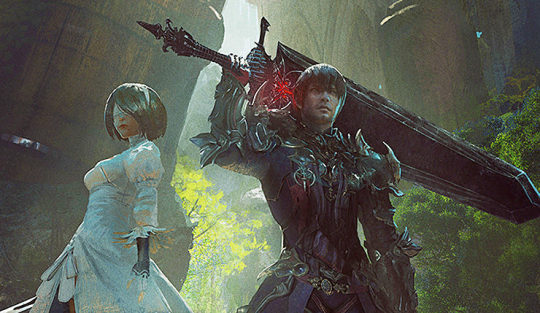
-The game I put maybe the most time into this year was Final Fantasy XIV: A Realm Reborn. I finally made the plunge into neverending FF MMO content, and I’m as happy as I am overwhelmed. This was a big year for the game, between the release of the Shadowbringers expansion and the Nier: Automata raid, and it very well may have made it onto my list if I had managed to actually get to any of it. At the time of this writing, though, I’ve only just finished 2015’s Heavensward, so I’ve got...a long way to go.
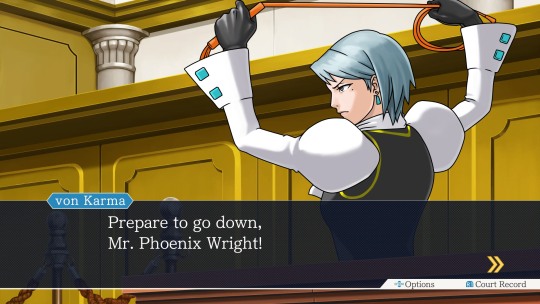
-One quick shoutout to the Phoenix Wright: Ace Attorney Trilogy that came out on Switch this year, a remaster of some DS classics I never played. An absolutely delightful visual novel series that I fell in love with throughout this year.
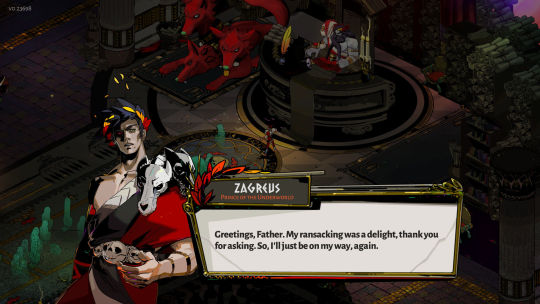

-I originally included a couple games currently in early access that I’ve enjoyed immensely. I removed them not because of arbitrary rules about what technically “came out” this year, but just to make room for some other games I liked, out of the assumption that I’ll still love these games in their 1.0 formats when they’re released next year to include them on my 2020 list. So shoutout to Hades, probably the best rogue-like/lite/whatever I’ve ever played, and Spin Rhythm XD, which reignited my love for rhythm games.
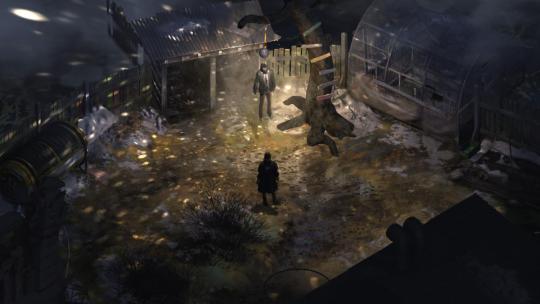
-Disco Elysium isn’t on this list, because I’ve played about an hour of it and haven’t yet been hooked by it. But I’ve heard enough about it to be convinced that it is 1000% a game for me and something I need to get to immediately. They shouted out Marx and Engels at the Game Awards! They look so cool! I want to be their friend! And hopefully, a few weeks from now, I’ll desperately want to redact this list to squeeze this game somewhere in here.
Alright, he’s the actual list:
10. Amid Evil
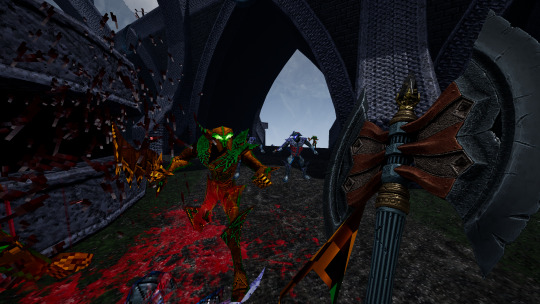
The 90’s FPS renaissance continues! As opposed to last year’s Dusk, a game I adored, this one takes its cues less from Quake and more from Heretic/Hexen, placing a greater emphasis on melee combat and magic-fuelled projectiles than more traditional weapons. Also, rather than that game’s intentionally ugly aesthetic, this one opts for graphics that at times feel lush, detailed, and pretty, while still probably mostly fitting the description of lo-fi. In fact, they just added RTX to the game, something I’m extremely curious to check out. This game continued to fuel my excitement about the possibilities of embracing out-of-style gameplay mechanics to discover new and fresh possibilities from a genre I’ve never been able to stop yearning for more of.
9. Ape Out
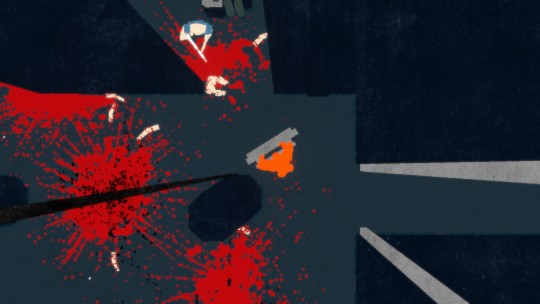
If this were a “coolest games” list, Ape Out would win it, easily. It’s a simple game whose mechanics don’t particularly evolve throughout the course of its handful of hours, but it leaves a hell of an impression with its minimalist cut-out graphics, stylish title cards, and percussive soundtrack. Smashing guards into each other and walls and causing them to shoot each other in a mad-dash for the exit is a fun as hell take on Hotline Miami-esque top down hyper violence, even if it’s a thin enough concept that it starts to feel a bit old before the end of the game.
8. Fire Emblem: Three Houses
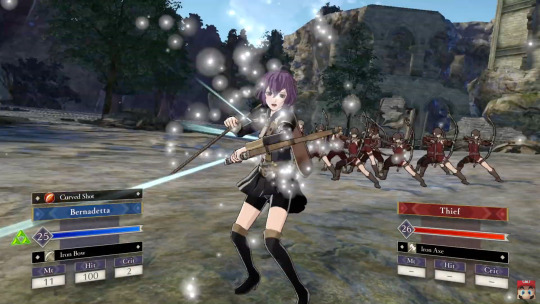
I had a lot of problems with this game, probably most stemming from just how damn long it is - I still haven’t finished my first, and likely only, playthrough. This length seems to have motivated the developers to make battles more simple and easy, and to be fair, I would get frustrated if I were getting stuck on individual battles if I couldn’t stop thinking about how much longer I have to go, but as it is, I’ve just found them to be mostly boring. This is particularly problematic for a game that seems to require you to play through it at least...three times to really get the full picture? I couldn’t help but admire everything this game got right, though, and that mostly comes down to building a massive cast of extremely well realized and likable characters whose complex relationships with each other and with the structures they pledge loyalty to fuels harrowing drama once the plot really sets into motion. There’s a reason no other game inspired such a deluge of memes and fan fiction and art into my Twitter feed this year. It’s an impressive feat to convince every player they’ve unquestionably picked the right house and defend their problem children till the bitter end. After the success of this game, I’d love to see what this team can do next with a narrower focus and a bigger budget.
7. Resident Evil 2
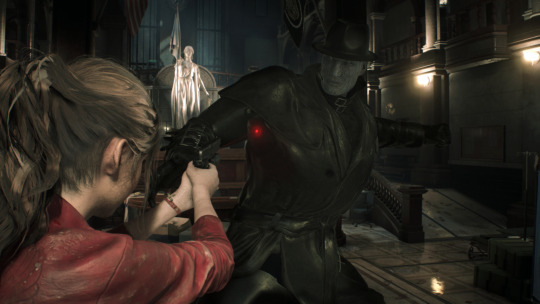
It’s been a long time since I played the original Resident Evil 2, but I still consider it to be one of my favorite games of all time. I was highly skeptical of this remake at first, holding my stubborn ground that changing the fixed camera to a RE4-style behind the back perspective would turn this game more into an action game and less of a survival horror game where feeling a lack of control is part of the experience. I was pleasantly surprised to find how much they were able to modernize this game while maintaining its original feel and atmosphere. The fumbly, drifting aim-down sights effectively sell the feeling of being a rookie scared out of your wits. Being chased by Mr. X is wildly anxiety-inducing. But even more surprisingly, perhaps the greatest upgrade this game received was its map, which does you the generous service of actually marking down automatically where puzzles and items are, which rooms you’ve yet to enter, which ones you’ve searched entirely, and which ones still have more to discover. Arguably, this disrupts the feeling of being lost in a labyrinthine space that the original inspired, but in practice, it’s a remarkably satisfying and addicting video game system to engage with.
6. Judgment
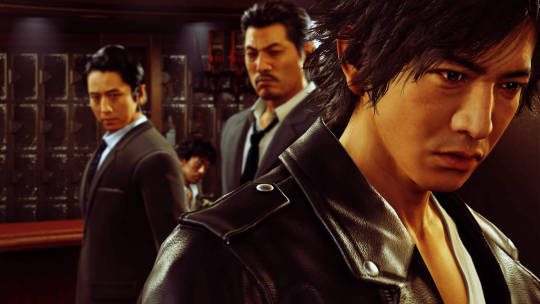
No big surprise here - Ryu ga Gotoku put out another Yakuza-style game set in Kamurocho, and once again, it’s sitting somewhere on my top 10. This time, they finally put Kazuma Kiryu’s story to bed and focused on a new protagonist, down on his luck lawyer-turned-detective Takayuki Yagami. The new direction doesn’t always pay off - the added mechanics of following and chasing suspects gets a bit tedious. The game makes up for it, though, by absolutely nailing a fun, engrossing J-Drama of a plot entirely divorced from the Yakuza lore. The narrative takes several head-spinning turns through its several dozen hours, and they all feel earned, with a fresh sense of focus. The side stories in this one do even more to make you feel connected to the community of Kamurocho by befriending people from across the neighborhood. I’d love to see this team take even bigger swings in the future - and from what I’ve seen from Yakuza 7, that seems exactly like what they’re doing - but even if this game shares maybe a bit too much DNA with its predecessors, it’s hard to complain when the writing and acting are this enjoyable.
5. Control
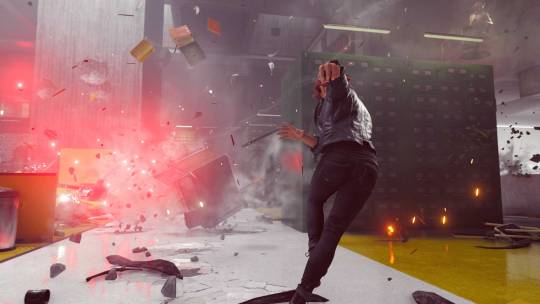
Control feels like the kind of game that almost never gets made anymore. It’s a AAA game that isn’t connected to any larger franchises and doesn’t demand your attention for longer than a dozen hours. It doesn’t shoehorn needless RPG or MMO mechanics into its third-person action game formula to hold your attention. It introduces a wildly clever idea, tells a concise story with it, and then its over. And there’s something so refreshing about all of that. The setting of The Oldest House has a lot to do with it. I think it stands toe-to-toe with Rapture or Black Mesa as an instantly iconic game world. Its aesthetic blend of paranormal horror and banal government bureaucracy gripped my inner X-Files fan instantly, and kept him satisfied not only with its central characters and mystery but with a generous bounty of redacted documents full of worldbuilding both spine-tingling and hilarious. More will undoubtedly come from this game, in the form of DLC and possibly even more, with the way it ties itself into other Remedy universes, and as much as I expect I will love it, the refreshing experience this base game offered me likely can’t be beat.
4. Anodyne 2
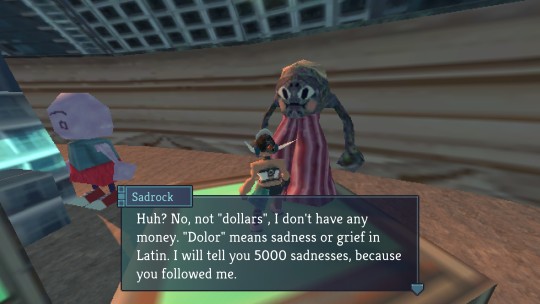
I awaited Sean Han Tani and Marina Kittaka’s new game more anxiously than almost any game that came out this year, despite never having played the first one, exclusively on my love for last year’s singular All Our Asias and the promise that this game would greatly expand on that one’s Saturn/PS1-esque early 3D graphics and personal, heartfelt storytelling. Not only was I not disappointed, I was regularly pleasantly surprised by the depth of narrative and themes the game navigates. This game takes the ‘legendary hero’ tropes of a Zelda game and flips them to tell a story about the importance of community and taking care of loved ones over duty to governments or organizations. The dungeons that similarly reflect a Link to the Past-era Zelda game reduce the maps to bite-sized, funny, clever designs that ask you to internalize unique mechanics that result in affecting conclusions. Plus, it’s gorgeously idiosyncratic in its blend of 3D and 2D environments and its pretty but off-kilter score. It’s hard to believe something this full and well realized came from two people.
3. Eliza

Eliza is a work of dystopian fiction so closely resembling the state of the world in 2019 it’s hard to even want to call it sci-fi. As a proxy for the Eliza app, you speak the words of an AI therapist that offers meager, generic suggestions as a catch-all for desperate people facing any number of the nightmares of our time. The first session you get is a man reckoning with the state the world is in - we’ve only got a few more years left to save ourselves from impending climate crisis, destructive development is rendering cities unlivable for anyone but the super-rich, and the people who hold all the power are just making it all worse. The only thing you offer to him is to use a meditation app and take some medication. It doesn’t take long for you to realize that this whole structure is much less about helping struggling people and more about mining personal data.
There’s much more to this story than the grim state of mental health under late capitalism, though. It’s revealed that Evelyn, the character you play as, has a much closer history with Eliza than initially evident. Throughout the game, she’ll reacquaint herself with old coworkers, including her two former bosses who have recently split and run different companies over their differing frightening visions for the future. The game offers a biting critique of the kind of tech company optimism that brings rich, eccentric men to believe they can solve the world’s problems within the hyper-capitalist structure they’ve thrived under, and how quickly this mindset gives way to techno-fascism. There’s also Evelyn’s former team member, Nora, who has quit the tech world in favor of being a DJ “activist,” and her current lead Rae, a compassionate person who genuinely believes in the power of Eliza to better people’s lives. The writing does an excellent job of justifying everyone’s points of view and highlighting the limits of their ideology without simplifying their sense of morality.
Why this game works so well isn’t just its willingness to stare in the face of uncomfortably relevant subject matter, but its ultimately empathetic message. It offers no simple solutions to the world’s problems, but also avoids falling into utter despair. Instead, it places measured but inspiring faith in the power of making small, meaningful impacts on the people around you, and simply trying to put some good into your world. It’s a game both terrifying and comforting in its frank conclusions.
2. Death Stranding
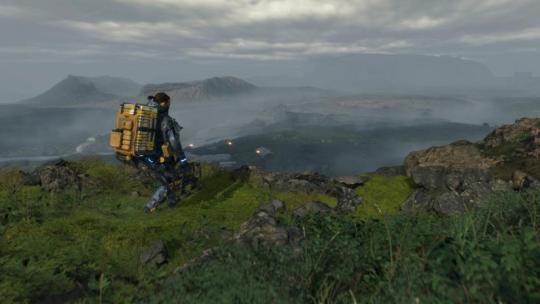
For a game as willfully dumb as this one often is - that, for example, insists on giving all of its characters with self-explanatory names long monologues about how they got that name - Death Stranding was one of the most thought provoking games I’ve played in a while. Outside of its indulgent, awkwardly paced narrative, the game offers plenty of reflection on the impact the internet has had on our lives. As Sam Porter Bridges, you’re hiking across a post-apocalyptic America, reconnecting isolated cities by delivering supplies, building infrastructure, and, probably most importantly, connecting them to the Chiral Network, an internet of sorts constructed of supernatural material of nebulous origin. Through this structure, the game offers surprisingly insightful commentary about the necessity for communication, cooperation, and genuine love and care within a community.
The lonely world you’re tasked to explore, and the way you’re given blips of encouragement within the solitude through the structures and “likes” you give and receive through the game’s asynchronous multiplayer system, offers some striking parallels for those of us particularly “online” people who feel simultaneous desperation for human contact and aversion to social pressures. I’ve heard the themes of this game described as “incoherent” due to the way it seems to view the internet both as a powerful tool to connect people and a means by which people become isolated and alienated, but are both of these statements not completely true to reality? The game simplifies some of its conclusions - Kojima seems particularly ignorant of America’s deep structural inequities and abuses that lead to a culture of isolation and alienation. And yet, the questions it asks are provocative enough that they compelled me to keep thinking about them far longer than the answers it offers.
Beyond the surprisingly rich thematic content, this game is mostly just a joy to play. Death Stranding builds kinetic drama out of the typically rote parts of games. Moving from point A to point B has become an increasingly tedious chore in the majority of AAA open world games, but this is a game built almost entirely out of moving from point A to point B, and it makes it thrilling. The simple act of walking down a hill while trying to balance a heavy load on your back and avoiding rocks and other obstacles fulfills the promise of the term ‘walking simulator’ in a far more interesting way than most games given that descriptor. The game consistently doles out new ways to navigate terrain, which peaked for me about two thirds of the way through the game when, after spending hours setting up a network of zip lines, a delivery offered me the opportunity to utilize the entire thing in a wildly satisfying journey from one end of the map to another. It was the gaming moment of the year.
1. Outer Wilds
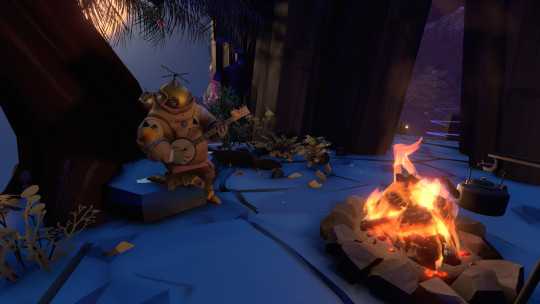
The first time the sun exploded in my Outer Wilds playthrough, I was probably about to die anyway. I had fallen through a black hole, and had yet to figure out how to recover from that, so I was drifting listlessly through space with diminishing oxygen as the synths started to pick up and I watched the sun fall in on itself and then expand throughout the solar system as my vision went went. The moment gave me chills, not because I wasn’t already doomed anyway, but because I couldn’t help but think about my neighbors that I had left behind to explore space. I hadn’t known that mere minutes after I left the atmosphere the solar system would be obliterated, but I was at least able to watch as it happened. They probably had no idea what happened. Suddenly their lives and their planet and everything they had known were just...gone. And then I woke up, with the campfire burning in front of me, and everyone looking just as I had left it. And I became obsessed with figuring out how to stop that from happening again.
What surprised me is that every time the sun exploded, it never failed to produce those chills I felt the first time. This game is masterful in its art, sound, and music design that manages to produce feelings so intense from an aesthetic so quaint. Tracking down fellow explorers by following the sound of their harmonica or acoustic guitar. Exploring space in a rickety vessel held together by wood and tape. Translating logs of conversations of an ancient alien race and finding the subject matter of discussion to be about small interpersonal drama as often as it is revelatory secrets of the universe. All of the potentially twee aspects of the game are balanced out by an innate sense of danger and terror that comes from exploring space and strange worlds alone. At times, the game dips into pure horror, making other aspects of the presentation all the more charming by comparison. And then there’s the clockwork machinations of the 22-minute loop you explore within, rewarding exploration and experimentation with reveals that make you feel like a genius for figuring out the puzzle at the same time that you’re stunned by the divulgence of a new piece of information.
The last few hours of the game contained a couple puzzles so obfuscated that I had to consult a guide, which admittedly lessened the impact of those reveals, but it all led to one of the most equally devastating and satisfying endings I’ve experienced in a video game recently. I really can’t say enough good things about this game. It’s not only my favorite game this year, but easily one of my favorite games of the decade, and really, of all-time, when it comes down to it.
#outer wilds#death stranding#eliza#anodyne 2#control#judgment#resident evil 2#fire emblem: three houses#Ape Out#Amid Evil#games#video games#GOTY
87 notes
·
View notes
Audio
STAGE 66: YAKUZA
Yakuza, known in Japan as Ryū ga Gotoku (Like a Dragon, Japanese), is an action-adventure beat ’em up video game franchise created, owned and published by Sega.
The series originated from Toshihiro Nagoshi’s desire to create a game that would tell the way of life of the yakuza.
The series primarily focuses on the yakuza Kazuma Kiryu from the Tojo clan.
While Kiryu often assists the Tojo clan, the series has also featured him searching for another way of life in the form of raising orphans and helping those in need.
The gameplay of Yakuza has the player controlling Kiryu and various other characters depending on the story, in the city of Kamurocho, a fictionalized version of the real life Kabukichō district in Tokyo, where he can encounter an enemy, perform an activity or participate in its various available sub-stories, which often complement the main game story and reward the player with extra EXP to better enhance your fighting style, resilience and gameplay.
This game is also well known for its various mini-games, which range from things like bowling, darts, and arcade games, to much more involved things like hostess club management which can take a number of hours over the course of several sessions in themselves to complete, all to some hilariously amusing results.
The franchise has become a commercial and critical success, and as of 2017, Sega has reported that the Yakuza franchise has sold a combined total of 10.5 million units in physical and digital sales since its debut in 2005. Strong sales of the games in its original Japanese market has led to the franchise’s expansion to other mediums, including film adaptations.
A great Beat ‘em up series that not only has had popularity over its home country of japan, but has gotten a big following in the united states and in Europe.
So it is why this STAGE of the Retro VGM Revival Hour, you better set up which fighting style works better as you are about to journey through the streets of Kamurocho taking down some thugs with these selected tracks from the Yakuza game series.
Full track listing:
=======Game – Composer – Title - Company========
1.) Yakuza 0 – Hidenori Shoji, Zenta Tsuchihashi , Kensuke Inage, Yoshiji Kobayashi, Karasuya-sabou, Saori Yoshida, POPHOLIC, Yasuyuki Matsuzaki, Hiroaki Watanabe, Sachio Ogawa, Fumiyoshi Shimohara, Yuri Fukuda, Keisuke Hattori, Takehiro Mamiya, yuyoyuppa, Hirotaka Kumagawa & Kiyo – “Force Addiction, La-Di-Da, Ultimate Road Rage, One-Eyed Slugger, Oath of Enma, JUDGEMENT (w/ vocals by Takaya Kuroda) & 24 hour Cinderella (w/ vocals by Hidenari Ugaki)“ – March 12, 2015 – Ryu Ga Gotoku Studio/Sega – Windows PC, PS3 & PS4
2.) Yakuza – Hidenori Shoji, Sachio Ogawa, Keitaro Hanada, Fumio Ito, Yuri Fukuda & John Newton – “Funk Goes On, Scarlet Scar, ID & Poison Pill” – December 8, 2005 – Sega – PS2, PS3 & Wii U (Japan Only)
3.) Yakuza 2 – Hidenori Shoji, Hideki Sakamoto, Franz Gruber, Norihiko Hibino & Takahiro Izutani – “As a man/As a brother, Push Me Underwater, Blockhead Boy, Face To Face & Evil Itself“ – December 7, 2006 – Sega – PS2, PS3 & Wii U (Japan Only)
4.) Yakuza 3 – Hidenori Shoji, Kentaro Koyama, Takahiro Kai, Hiroyoshi Kato, Love Sound System, Yoshio Tsuru & Hideki Sakamoto – “Fly, Bruise, Ryu-Kyu Humming, Crush and Strike, Test Your Imagination & D 2 A (w/ vocals by Chihiro Aoki)” – February 26, 2009 – Sega – PS3 & PS4
5.) Yakuza 4 -Hidenori Shoji, Kenichi Tokoi, Yuri Fukuda, Yoshio Tsuru, Ryohei Kohno, Mitsuharu Fukuyama, Yasuhiro Takagi, Yuichi Kanatani, Chihiro Aoki, Takashi Izeki, Takahiro Kai, Minako Seki, Flarewave Sound System, Eiji Kawai, Shigemitsu Goto, Love Sound System & Hideki Sakamoto – “Underground Dazzling Star(Neo), The Myth, Fighting Fighter & MachineGun Kiss” – March 18, 2010 – Sega – PS3 & PS4
6.) Yakuza 5 – Kyosuke Himuro, Yukihide Takekawa, Mitsuharu Fukuyama, Hidenori Shoji, Chihiro Aoki, Yasuyuki Matsuzaki, Hiroaki Watanabe, a-fei, Takeshi Isozaki, Zenta Tsuchihashi, DIG, Yuya Saito, Junya Tanaka, POPHOLIC, Yuri Fukuda, Atsuhiro Watanabe, Shunsuke Minami, Atsushi Yamaji, Gioachino Antonio Rossini, Akiko Akiyama & Saori Yoshida – “Hailstorm, I believe in you, Receive and Slash You, The COOL GUY SOSUKE, Comin’at ya/My girl, Noodle shop Ryuya & Loneliness loop (w/ vocals by Rie Kugimiya)“ – December 5, 2012 – Ryu Ga Gotoku Studio/Sega – PS3 & PS4
7.) Yakuza 6: The Song of Life – Chihiro Aoki, Hidenori Shoji, Yuri Fukuda, Saori Yoshida, Fumiyoshi Shimohara, Kenichi Tokoi, Tatsuyuki Maeda, Teruhiko Nakagawa, Zenta Tsuchihashi, Yasuyuki Matsuzaki, Hiroaki Watanabe, Kiyo, Tsuyoshi Kaneko, Shunsuke Minami , Shunsuke Yasaki, Masahiko Iida & Akiko Akiyama – “Bonds, Seakillers, Town Bully, Bloodstained Philosophy, Lots of Lights & Like A Butterfly (w/ vocals by Takaya Kuroda & Saki)“ – December 8, 2016 – Ryu Ga Gotoku Studio/Sega – PS4
8.) Yakuza Kenzan (Ryū ga Gotoku Kenzan!) – Hidenori Shoji, Hideki Sakamoto, Hiroyoshi Kato, Keisuke Ito & Yuri Fukuda – “Water and Melon, Blood Maker, Immortality & Masochism“ – March 6, 2008 (Japan Only) – Sega – PS3
9.) Kurohyō: Ryū ga Gotoku Shinshō – Mitsuharu Fukuyama, Hidenori Shoji, Yasuyuki Matsuzaki, Hiroaki Watanabe, Yukie Sugawara, skankfunk, Itsuki Onagi, Kentaro Ishii, Kouji Kinoshita, Heigo Tani (wall5) & Eigo Natsui – “Die anyway, DIGITALIZED, Kill city, YOUR KNIFE FEELS GOOD & SO UNUSUAL“ – September 22, 2010 (japan Only) – Sega & Syn Sophia/Sega – Playstation Portable
10.) Project X Zone 2 – Yoko Shimomura, Masami Ueda, Thomas Parisch, Laurent Ziliani, Kinuyo Yamashita, Masakazu Sugimori, Kohei Tanaka, Hidenori Shoji, Takenobu Mitsuyoshi, Yuzo Koshiro, Rio Hamamoto, Akihiro Namba, Chikayo Fukuda, Hiroyuki Kawada & Takuya Hanaoka – “Funk Goes On“ – November 12, 2015 – Monolith Soft/Bandai Namco Entertainment – Nintendo 3DS
11.) Yakuza: Dead Souls (Ryū ga Gotoku OF THE END) – Mitsuharu Fukuyama, Takahiro Kai, Takeshi Isozaki, Yuri Fukuda, Susumu Tsukagoshi, Chihiro Aoki, Yuichi Kanatani, Daniel Lindholm, Hiroshi Furukawa & ABOTTO Leo – “Inescapable Battle, Cry, Akiyama Battle Theme & Gary’s Boot Camp“ – June 9, 2011 – Sega – PS3
12.) Yakuza Ishin – Chihiro Aoki, Hidenori Shoji, Daisuke Anayama, Keitaro Hanada, Takatsugu Wakabayashi, Sachio Ogawa, Saori Yoshida, Zenta Tsuchihashi, Yusuke Sawai, Yasuyuki Matsuzaki, Hiroaki Watanabe, Ryohei Kohno, Yuri Fukuda, Shunsuke Yasaki & Tsuyoshi Kaneko – “Shika Flower, Sad sword, Roar, Willow’s Riff & Destroyed“ – February 22, 2014 (japan Only) – Ryu Ga Gotoku Studio/Sega – PS3 & PS4 (Both Japan Only)
13.) Judgment (Judge Eyes)- Hidenori Shoji, Yuri Fukuda, Saori Yoshida, Rio Hashikawa, Chihiro Aoki, Hiroaki Watanabe, Yasuyuki Matsuzaki, Tomoyuki Tanaka, Jin Senbonmatsu, Hideyuki Ono, Shunsuke Yasaki , Yuki Kobayashi, Kiyo, Charles François Gounod, Johann Sebastian Bach – “Drumfire, Moth, Line of sin, Final decision, BUZZY, Darkness & The Last Assassin XIV: Symphony of The Judgment“ – December 13, 2018 – Ryu Ga Gotoku Studio/Sega – PS4
14.) Yakuza Kiwami – Hidenori Shoji, Yuri Fukuda, Saori Yoshida, Keitaro Hanada, Sachio Ogawa, Syunsuke Minami, Shunsuke Yasaki, Zenta Tsuchihashi, Tsuyoshi Kaneko, Kiyo – “Funk Goes On, Flirt With Bomb, Ideal For Violence, The End Of The Dogma & Cherry blossoms 2000“ – January 21, 2016 – Ryu Ga Gotoku Studio/Sega – PS3, PS4 & Windows PC
15.) Yakuza Kiwami 2 – Hidenori Shoji, Yuri Fukuda, Saori Yoshida, Keitaro Hanada, Sachio Ogawa, Syunsuke Minami, Shunsuke Yasaki, Zenta Tsuchihashi, Tsuyoshi Kaneko, Kiyo – “The End Of The Dogma, Amusing Octagon, Update With Gunfire & The Wicked“ – December 7, 2017 – Ryu Ga Gotoku Studio/Sega – PS4 & Windows PC

Edgar Velasco: @MoonSpiderHugs
www.patreon.com/nostalgiaroadtrip
Youtube: www.youtube.com/c/NostalgiaRoadTripChannel
Official Site: nostalgiaroadtrip.com/
FaceBook: www.facebook.com/groups/nostalgiaroadtrip/
Official Twitter: @NRoadTripCast
#SoundCloud#music#RETRO VGM REVIVAL HOUR#Game#Sega#Kazuma Kiryu#Goro Majima#beat em up#beat em ups#vg music#vgm#vg ost#video games#video game music#yakuza#kiryu chan#yakuza majima#majima everywhere#kiryu#yakuza kiwami#yakuza game#yakuza games#ryū ga gotoku
2 notes
·
View notes
Text
Fist of the North Star: Lost Paradise is an Outstanding Open-World Oasis
IN THE YEAR 199X, a boy is with his parents at a tiny mom-and-pop video store in Okinawa called American Video, off on his own trying to find something to watch. He finds a tape, part of Streamline's "Video Comics" line of dubbed anime releases titled Fist of the North Star, and carefully covers the "Not for Kids!" sticker with his thumb when he shows it to his parents, who are fine with him watching Dragon Ball Z on Japanese TV, so more fighting anime men is perfectly fine. Thank you, parents--25 years later, that boy appreciates you being lax that one time.
The glorious violence that followed hit me right in the soul, adding a new love to my young life, one that's stayed with me ever since. I don't gush about my love for Fist of the North Star as much as, say, Dragon Ball or Giant Robo or Berserk or Gintama, but it's always there for me in some form... except in the realm of video games, for some reason.
Last Battle, a US-released Fist of the North Star Genesis game that removed the blood, changed everybody's names, and featured hilarious, nonsensical dialogue
Fist of the North Star is a franchise that's never been lacking in video game adaptations. From the very first PC adventure in 1986 to a whole list of side-scrolling actioners (one of which was released in the US as Last Battle) to those amazing arcade games with the punch pads to an (amazingly broken) ArcSys fighter all the way to Koei Tecmo's brutal large-scale brawlers, gamers have wasted more wasteland mooks than Kenshiro himself ever did. And to be completely fair, there's a reason fans don't talk about too many of them: with a few rare exceptions, they're not all that awesome.
So please, trust me when I say that Fist of the North Star: Lost Paradise is the first Fist of the North Star game to really get it right.
Finishing moves are (appropriately) accompanied by these sick-ass title cards and Kenshiro shouting the attack name
Fist of the North Star: Lost Paradise is the happy product of Sega's ongoing success with its Yakuza franchise, and just how perfectly Kenshiro and the gang fit into a very similar video game mold. I mean, look: a stoic-yet-honorable man must navigate a series of betrayals and revelations, all in the name of protecting their loved ones and cherished ideals, and all while getting into a series of spectacular one-against-many fistfights culminating in an emotionally-charged shirtless duel. Pretty damn spot-on, right?
Aside from perfectly lining up with Yakuza in terms of storytelling and overall feeling, Lost Paradise matches its gameplay as well: after a short on-rails introduction, Kenshiro wanders the wasteland and discovers the city Eden, which is besieged by game-original villain and Immortan Joe impersonator Kyo-Oh, the King of Fear, and his vast and vicious armies of wasteland killers. At the same time, Kenshiro has to battle the evils within Eden, and discover the city's secrets... and retell the rest of Fist of the North Star in the process.
Rather than just dump this game's entire original story between episodes 22 and 23, Lost Paradise simply picks up with Kenshiro facing Shin in their destined duel, and then adapts large chunks of Kenshiro's adventures to fit this tale. Rei and his glorious mullet still think Kenshiro kidnapped his sister, Jagi is still a poser piece of garbage, Rihaku is still the biggest Yuria fanboy on what's left of Earth, and Raoh is still the ideal all Shonen Jump villains aspire to. To further tie Lost Paradise to Yakuza, you'll hear a lot of familiar voice actors on the Japanese audio track: Kenshiro is played by an even more deadpan Takaya Kuroda (Kiryu), Raoh is given life by Masami Iwasaki (Ryuji Goda), Rin doesn't sing but still has that Rie Kugimiya (Haruka) adorableness, and many more as a satisfying nod to Yakuza fans.
The blasted-out, nuclear-bombed, oceans-dried-up world of Fist of the North Star isn't nearly as colorful or lively as Yakuza's, so there isn't much to look at, but the game does quite a bit to still make Eden feel like home. You'll spend most of your time running around Eden talking to different characters, receiving quests and substories, and eventually getting a buggy to drive around the wasteland and discover new locations to meet interesting people, hit their pressure points, and explode them from within.
Beautiful
Regular random battles are a big part of the Yakuza series, and despite how much I hate them in, say, JRPGs, I've never really been bothered by them in Yakuza because there's something truly satisfying about smashing some goon's head against a railing for daring to bother you while you're running around town trying to do something more important. Lost Paradise does much the same thing, with the same dozen or so types of post-apocalyptic troublemakers in Mad Max gear trying to start some shit, and then getting immediately turned into a fine red mist. When you start the game, Kenshiro's Hokuto Shinken feels more limited than Kiryu's techniques, but that quickly opens up as you buy and learn more techniques--there is no question as to whether or not you're going to win against these nobodies, so you're encouraged to finish them off as spectacularly and quickly as possible, with experience bonuses given out for particularly flashy or precise kills.
Yes, you can make a cocktail called "You're Already Drunk"
It's not all doom, gloom, and boom, though: Lost Paradise's world shows us a softer, funnier side of Kenshiro by putting him in ridiculous situations and letting him stay exactly as stoic and deadpan as he always is through a huge list of side quests and minigames. An accupressure rhythm game, post-apocalyptic baseball where you line-drive bikers with an I-beam, playing hide-and-seek with kids, fighting in the arena, bouncing and managing a hostess club, working in a grocery store, upgrading your buggy with Bat, and becoming the wasteland's best bartender aren't even the full list of distractions available from the main plot. Like I've said before, none of these time-wasters feel like wasted time--you get experience for all of them, and they all serve to make Kenshiro and the people around him that much more endearing.
Lost Paradise, unfortunately, is not quite paradise on all fronts: the constant random battles would be fine if you could just tear through them, but you'll hit regular snags with large enemies who simply exist to soak up damage, and the battle system just isn't flexible enough to give you ways around this aside from just hammering them until they stagger. Character models and animation feel stiff, especially for small everyday actions like walking up and down stairs, and driving the buggy is something I just want to do as little as possible. No joke, Mass Effect's Mako controls better than this thing. Additionally, Fist of the North Star's story has never been particularly complex, but that was to its benefit--a few late-game reveals and a final villain switcheroo feel kind of weak, and take away from the built-up emotion (and a tradition of perfect final battles in the Yakuza series).
Even with a few frustrations showing up now and then, I could not stop playing Fist of the North Star: Lost Paradise. Popping bad guys like zits is addicting, spending time with Kenshiro's friends even more so. Lost Paradise is so much more than a post-apocalyptic palette swap--just as you spend entire Yakuza games becoming the Dragon of Dojima, now you too can become the Savior of the Century's End. And maybe a little more than that, too: Lost Paradise adds some dimension to the otherwise stone-faced Kenshiro, and maybe this is what this legend needed to get (even) more people to love him.
REVIEW ROUNDUP
+ Fully-realized Fist of the North Star experience: sound, visuals, rhythm of combat, hot-blooded energy
+ Satisfying battle system requires creativity, forethought, and efficiency to truly fight like Kenshiro
+ Wealth of minigames and side quests never feel like filler because they're just that damn good
+ Shoutouts and callbacks for Fist of the North Star and Yakuza fans alike
+/- Explore a larger map with the buggy, but the buggy is also just not fun to drive
+/- Character models look so close to Buronson's art, but this also makes their animations kinda wonky
- I legitimately don't feel any connection toward the game's original characters
- Hidenari Ugaki (Majima) deserves so much better than playing Jagi
-----
Nate Ming is the Features Editor for Crunchyroll News and creator of the long-running Fanart Friday column. You can follow him on Twitter at @NateMing.
0 notes
Text
Fist of the North Star: Lost Paradise is an Outstanding Open-World Oasis
IN THE YEAR 199X, a boy is with his parents at a tiny mom-and-pop video store in Okinawa called American Video, off on his own trying to find something to watch. He finds a tape, part of Streamline's "Video Comics" line of dubbed anime releases titled Fist of the North Star, and carefully covers the "Not for Kids!" sticker with his thumb when he shows it to his parents, who are fine with him watching Dragon Ball Z on Japanese TV, so more fighting anime men is perfectly fine. Thank you, parents--25 years later, that boy appreciates you being lax that one time.
The glorious violence that followed hit me right in the soul, adding a new love to my young life, one that's stayed with me ever since. I don't gush about my love for Fist of the North Star as much as, say, Dragon Ball or Giant Robo or Berserk or Gintama, but it's always there for me in some form... except in the realm of video games, for some reason.
Last Battle, a US-released Fist of the North Star Genesis game that removed the blood, changed everybody's names, and featured hilarious, nonsensical dialogue
Fist of the North Star is a franchise that's never been lacking in video game adaptations. From the very first PC adventure in 1986 to a whole list of side-scrolling actioners (one of which was released in the US as Last Battle) to those amazing arcade games with the punch pads to an (amazingly broken) ArcSys fighter all the way to Koei Tecmo's brutal large-scale brawlers, gamers have wasted more wasteland mooks than Kenshiro himself ever did. And to be completely fair, there's a reason fans don't talk about too many of them: with a few rare exceptions, they're not all that awesome.
So please, trust me when I say that Fist of the North Star: Lost Paradise is the first Fist of the North Star game to really get it right.
Finishing moves are (appropriately) accompanied by these sick-ass title cards and Kenshiro shouting the attack name
Fist of the North Star: Lost Paradise is the happy product of Sega's ongoing success with its Yakuza franchise, and just how perfectly Kenshiro and the gang fit into a very similar video game mold. I mean, look: a stoic-yet-honorable man must navigate a series of betrayals and revelations, all in the name of protecting their loved ones and cherished ideals, and all while getting into a series of spectacular one-against-many fistfights culminating in an emotionally-charged shirtless duel. Pretty damn spot-on, right?
Aside from perfectly lining up with Yakuza in terms of storytelling and overall feeling, Lost Paradise matches its gameplay as well: after a short on-rails introduction, Kenshiro wanders the wasteland and discovers the city Eden, which is besieged by game-original villain and Immortan Joe impersonator Kyo-Oh, the King of Fear, and his vast and vicious armies of wasteland killers. At the same time, Kenshiro has to battle the evils within Eden, and discover the city's secrets... and retell the rest of Fist of the North Star in the process.
Rather than just dump this game's entire original story between episodes 22 and 23, Lost Paradise simply picks up with Kenshiro facing Shin in their destined duel, and then adapts large chunks of Kenshiro's adventures to fit this tale. Rei and his glorious mullet still think Kenshiro kidnapped his sister, Jagi is still a poser piece of garbage, Rihaku is still the biggest Yuria fanboy on what's left of Earth, and Raoh is still the ideal all Shonen Jump villains aspire to. To further tie Lost Paradise to Yakuza, you'll hear a lot of familiar voice actors on the Japanese audio track: Kenshiro is played by an even more deadpan Takaya Kuroda (Kiryu), Raoh is given life by Masami Iwasaki (Ryuji Goda), Rin doesn't sing but still has that Rie Kugimiya (Haruka) adorableness, and many more as a satisfying nod to Yakuza fans.
The blasted-out, nuclear-bombed, oceans-dried-up world of Fist of the North Star isn't nearly as colorful or lively as Yakuza's, so there isn't much to look at, but the game does quite a bit to still make Eden feel like home. You'll spend most of your time running around Eden talking to different characters, receiving quests and substories, and eventually getting a buggy to drive around the wasteland and discover new locations to meet interesting people, hit their pressure points, and explode them from within.
Beautiful
Regular random battles are a big part of the Yakuza series, and despite how much I hate them in, say, JRPGs, I've never really been bothered by them in Yakuza because there's something truly satisfying about smashing some goon's head against a railing for daring to bother you while you're running around town trying to do something more important. Lost Paradise does much the same thing, with the same dozen or so types of post-apocalyptic troublemakers in Mad Max gear trying to start some shit, and then getting immediately turned into a fine red mist. When you start the game, Kenshiro's Hokuto Shinken feels more limited than Kiryu's techniques, but that quickly opens up as you buy and learn more techniques--there is no question as to whether or not you're going to win against these nobodies, so you're encouraged to finish them off as spectacularly and quickly as possible, with experience bonuses given out for particularly flashy or precise kills.
Yes, you can make a cocktail called "You're Already Drunk"
It's not all doom, gloom, and boom, though: Lost Paradise's world shows us a softer, funnier side of Kenshiro by putting him in ridiculous situations and letting him stay exactly as stoic and deadpan as he always is through a huge list of side quests and minigames. An accupressure rhythm game, post-apocalyptic baseball where you line-drive bikers with an I-beam, playing hide-and-seek with kids, fighting in the arena, bouncing and managing a hostess club, working in a grocery store, upgrading your buggy with Bat, and becoming the wasteland's best bartender aren't even the full list of distractions available from the main plot. Like I've said before, none of these time-wasters feel like wasted time--you get experience for all of them, and they all serve to make Kenshiro and the people around him that much more endearing.
Lost Paradise, unfortunately, is not quite paradise on all fronts: the constant random battles would be fine if you could just tear through them, but you'll hit regular snags with large enemies who simply exist to soak up damage, and the battle system just isn't flexible enough to give you ways around this aside from just hammering them until they stagger. Character models and animation feel stiff, especially for small everyday actions like walking up and down stairs, and driving the buggy is something I just want to do as little as possible. No joke, Mass Effect's Mako controls better than this thing. Additionally, Fist of the North Star's story has never been particularly complex, but that was to its benefit--a few late-game reveals and a final villain switcheroo feel kind of weak, and take away from the built-up emotion (and a tradition of perfect final battles in the Yakuza series).
Even with a few frustrations showing up now and then, I could not stop playing Fist of the North Star: Lost Paradise. Popping bad guys like zits is addicting, spending time with Kenshiro's friends even more so. Lost Paradise is so much more than a post-apocalyptic palette swap--just as you spend entire Yakuza games becoming the Dragon of Dojima, now you too can become the Savior of the Century's End. And maybe a little more than that, too: Lost Paradise adds some dimension to the otherwise stone-faced Kenshiro, and maybe this is what this legend needed to get (even) more people to love him.
REVIEW ROUNDUP
+ Fully-realized Fist of the North Star experience: sound, visuals, rhythm of combat, hot-blooded energy
+ Satisfying battle system requires creativity, forethought, and efficiency to truly fight like Kenshiro
+ Wealth of minigames and side quests never feel like filler because they're just that damn good
+ Shoutouts and callbacks for Fist of the North Star and Yakuza fans alike
+/- Explore a larger map with the buggy, but the buggy is also just not fun to drive
+/- Character models look so close to Buronson's art, but this also makes their animations kinda wonky
- I legitimately don't feel any connection toward the game's original characters
- Hidenari Ugaki (Majima) deserves so much better than playing Jagi
-----
Nate Ming is the Features Editor for Crunchyroll News and creator of the long-running Fanart Friday column. You can follow him on Twitter at @NateMing.
0 notes